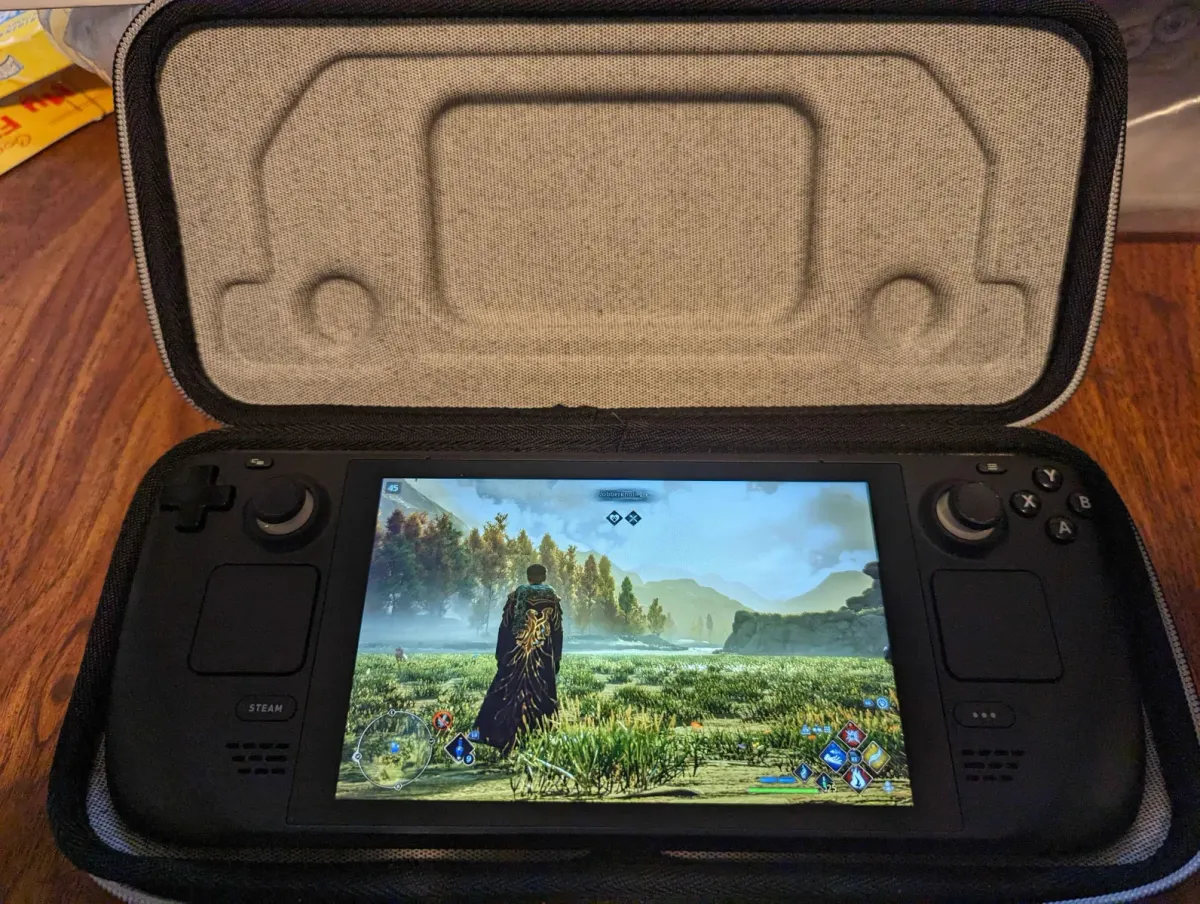Valve Steamdeck LCD Review
Steam Deck review: Valve’s first handheld PC impressed at launch but struggled with screen, power, and game compatibility.

Table of Contents
- Summary
- Specs as Reviewed
- Design and Build Quality
- Screen
- Performance and Game Compatibility
- Software and User Experience
- Battery Life
- Final Thoughts
- Credits & References
Summary
I was one of the early adopters who preordered the Steam Deck on day one — and I’ll admit, at launch, it felt like stepping into the future of handheld PC gaming. The concept was amazing, the hype was real, and Valve’s execution mostly delivered.
But once the excitement wore off, the cracks started to show. The LCD screen was mediocre at best, and the performance just wasn’t enough to handle the heavier games I wanted to play. SteamOS support was rough, and early game compatibility was downright painful — especially anything with anti-cheat, which still remains a major issue even today.
Despite that, I have a lot of respect for what the Deck started. It paved the way for the handhelds we have now.
Specs as Reviewed
- Model: Steam Deck (Launch Edition)
- CPU/GPU: AMD APU – 4c/8t Zen 2 + 8 RDNA 2 CUs
- RAM: 16GB LPDDR5
- Storage: 512GB NVMe SSD
- Display: 7" 1280×800 LCD (anti-glare etched glass), 60Hz
- Battery: 40Wh
- Operating System: SteamOS 3 (Arch-based Linux)
Design and Build Quality
The design was bold — massive grips, big triggers, and a comfortable layout that felt surprisingly ergonomic despite its bulk. It’s not exactly pocketable, but it was easy to hold for long sessions. The build quality felt solid, though the glossy screen bezels picked up fingerprints easily.
The layout felt like a PC gamer’s dream — trackpads, thumbsticks, triggers, and shortcuts galore. It felt like Valve had truly built something meant for PC gamers, not console players.
Screen
Unfortunately, the screen was the weakest part of the whole system. My unit featured the anti-glare etched glass coating, which was a nice touch on paper — but it didn’t hide the fact that the panel itself was fairly lackluster.
The biggest issue for me was inconsistent backlight bleed. It wasn’t always visible, but in darker scenes or loading screens, it stood out like a sore thumb. It robbed the Deck of contrast and made the blacks look hazy. The coating helped with reflections, but it couldn’t fix uneven lighting or poor color uniformity.
It wasn’t deal-breaking, but it definitely didn’t do the Deck any justice. Valve’s later OLED revision finally addressed these problems, and it honestly felt like the handheld the original should have been.
Performance and Game Compatibility
The Steam Deck was never designed to compete with a full gaming PC, but even then, the performance left something to be desired. Indie titles ran beautifully, and emulation was impressive, but AAA games — especially newer ones — really pushed the hardware to its limits.
At launch, game support was rough. Many popular titles didn’t run at all due to Proton compatibility issues, and anti-cheat systems like Easy Anti-Cheat and BattlEye made entire categories of multiplayer games completely unplayable.
Even now, years later, some of those issues persist.
That said, for what it was, Valve achieved something impressive — a portable Linux PC that could actually play games.
Software and User Experience
SteamOS was a brilliant idea — a unified launcher that felt console-like, running on top of Linux. Unfortunately, it was far from polished in the early days. The UI often froze, sleep mode had bugs, and switching between desktop mode and gaming mode could break things completely.
Still, Valve’s commitment to updates deserves praise. Over time, SteamOS has matured significantly, and the user experience today is much better than at launch. But those first few months were undeniably rough.
Battery Life
Battery life was hit or miss depending on the game. Playing smaller indie titles could net 3–4 hours, but anything remotely demanding would drain it in under 90 minutes. For me, it was manageable, but the Deck’s fan noise and heat output were noticeable during longer sessions.
Final Thoughts
The OG Steam Deck wasn’t perfect — far from it. The LCD screen was subpar, performance was modest, and early game support was frustrating. But it changed the landscape. It proved that handheld PC gaming was viable and pushed companies like ASUS, Lenovo, and AYN to bring their A-game.
Even though I eventually moved on to more powerful handhelds, the Steam Deck still holds a nostalgic place in my collection. It was the start of something big — a flawed but important milestone.
